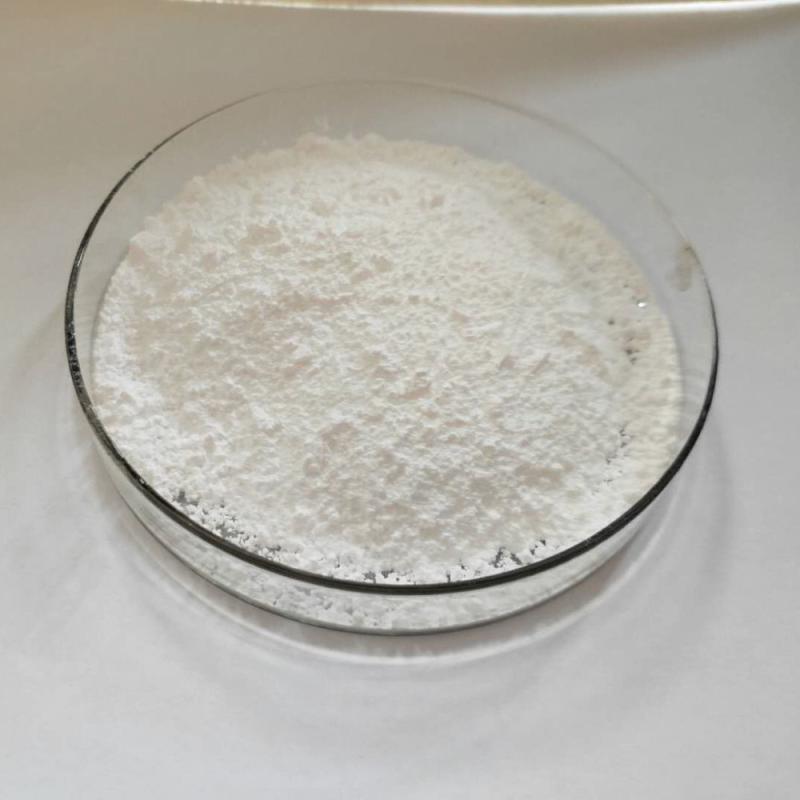Confirmed that indene computer virus of cotton bollworm, smoke shoot the moth, plutella xylostella, caterpillar, beet armyworm, powder grain to the moth, blue noctuid moth, apple and so on nearly all essential agriculture pest lepidoptera has wonderful insecticidal hobby, the small inexperienced leafhopper, leafhoppers, peach aphid, potato potato beetle with wing indoxacarb is the first commercial oxadiazine insecticide.
Contacta ahora
Structural formula:Molecular weight: 416.3CAS No. : 52315-07-8Product description:Cypermethrin (CP) is a synthetic pyrethroid used as an insecticide in large-scale commercial agricultural applications as well as in consumer products for domestic purposes. It behaves as a fast-acting neurotoxin in insects. It is easily degraded on soil and plants but can be effective for weeks when applied to indoor inert surfaces. Exposure to sunlight, water and oxygen will accelerate its decomposition.
Contacta ahora
Product description:The pure made from mancozeb is white powder, and the commercial product is off-white or light yellow powder with the smell of rotten eggs. it's miles hardly ever soluble in water, insoluble in maximum natural solvents, soluble in pyridine, and volatile to mild, warmth, and humidity.
Contacta ahora
Common name: PropiconazoleChemical name:1-[[2-(2,4-dichlorophenyl)-4-propyl-1,3-dioxolan-2-yl]methyl]-1H-1,2,4-triazoleMolecular formula: C15H17Cl2N3O2 Structural formula:Molecular weight: 342.22CAS No. : 60207-90-1Product description:Propiconazole is a triazole fungicide, also known as a DMI, or demethylation inhibiting fungicide due to its binding with and inhibiting the 14-alpha demethylase enzyme from demethylating a precursor to ergosterol.
Contacta ahora
Product description:Metalaxyl is an acylalanine fungicide with systemic feature.[3] its chemical name is methyl n-(methoxyacetyl)-n-(2,6-xylyl)-dl-alaninate. it may be used to govern pythium in a number of vegetable plants, and phytophthora in peas.
Contacta ahora
Product description:Propiconazole is a triazole fungicide, also referred to as a dmi, or demethylation inhibiting fungicide due to its binding with and inhibiting the 14-alpha demethylase enzyme from demethylating a precursor to ergosterol. with out this demethylation step, the ergosterols are not protected into the growing fungal cellular membranes, and cellular increase is stopped.Common name: PropiconazoleChemical name:1-[[2-(2,4-dichlorophenyl)-4-propyl-1,3-dioxolan-2-yl]methyl]-1H-1,2,4-triazoleMolecular formula: C15H17Cl2N3O2 Structural formula:Molecular weight: 342.22CAS No.
Contacta ahora
Common name: DifenoconazoleChemical name: 1-({2-[2-Chloro-4-(4-chlorophenoxy)phenyl]-4-methyl-1,3-dioxolan-2-yl}methyl)-1H-1,2,4-triazoleMolecular formula: C19H17Cl2N3O3Structural formula: Molecular weight: 406.26CAS No. : 119446-68-3Product description:Difenoconazole, also known as oxadifenazole, is a triazole fungicide and a sterol demethylation inhibitor. It has the characteristics of high efficiency, broad spectrum, low toxicity, and low dosage. An excellent variety of triazole fungicides with strong systemic properties.
Contacta ahora
MF: C4H8MnN2S4ZnMW: 332.71CAS: 8018-01-7Melting point of 192-194 ° CDensity of 1.92 g/cm3Vapor pressure, Negligible AT, 20 °CFlash point is 138 ° CStorage condition APPROX 4°CWater solubility 6-20 mgl-1 (20 °C)Product description:Pure mancozeb is white powder, industrial products are gray white or light yellow powder, with rotten egg taste.
Contacta ahora
Common name: DimethomorphChemical name:(E,Z)4-[3-(4-chlorophenyl)-3-(3,4-dimethoxyphenyl)acryloyl] morpholineMolecular formula: C21H22ClNO4Structural formula:Molecular weight: 387.86CAS No. : 110488-70-5Product description:It is a special fungicide of the class of oomycetes. Its function is to destroy the formation of cell wall membrane. It has an effect on all stages of the life history of oomycetes. It is especially sensitive in the formation stage of sporangia stems and oospores, at very low concentrations. Down (<0.25μg/ml) is inhibited.
Contacta ahora
Common name: ImazamoxChemical name:(RS)-2-(4-isopropyl-4-methyl-5-oxo-2-imidazolin-2-yl)-5-methoxymethylnicotinic acidMolecular formula: C15H19N3O4Structural formula:Molecular weight: 305.33CAS No. : 114311-32-9 Physical and chemical properties:This product is solid. m.p.166~166.7℃, vapor pressure<1.3×10-5Pa. The solubility is: methylene chloride 14.3g/100L, methanol 6.68g/100L, acetone 2.93g/100L, acetonitrile 1.85g/100L, ethyl acetate 1.02g/100L, n-hexane 0.0006g/100L, partition coefficient 5.36 (25℃) ).
Contacta ahora
AzaconazoleChemical name:1-[[2-(2,4-dichlorophenyl)-1,3-dioxolan-2-yl]methyl]-1,2,4-triazole Molecular formula: C12H11Cl2N3O2Structural formula:Molecular weight: 300.1406CAS No. : 60207-31-0Physical and chemical properties:Density: 1.51 g/cm3Melting point: DHS 112.6 CBoiling point: 460.7ºC at 760 mmHgFlash: DHS 232.4 CRefractive index: 1.658Storage conditions: 0-6ºC
Contacta ahora
Common name: TriclopyrChemical name: [(3,5,6-trichloropyridin-2-yl)oxy]acetic acidMolecular formula: C7H4Cl3NO3Structural formula:Molecular weight: 256.47CAS No. : 55335-06-3Physical and chemical properties:The pure product is a white crystalline solid. m.p.148~150℃, decomposition temperature 290℃. The vapor pressure is 1.68×10-4Pa. It is soluble in organic solvents such as ethanol, and its solubility in water at 25°C is 430~440mg/L.
Contacta ahora
Common name: MetalaxylChemical name: methyl2-[(2,6-dimethylphenyl)(methoxyacetyl)amino]propanoateMolecular formula: C15H21NO4Structural formula:Molecular weight: 279.33CAS No. : 57837-19-1Product description:Metalaxyl is an acylalanine fungicide with systemic function.[3] Its chemical name is methyl N-(methoxyacetyl)-N-(2,6-xylyl)-DL-alaninate. It can be used to control Pythium in a number of vegetable crops, and Phytophthora in peas.
Contacta ahora
Common name: Thiophanate-MethylChemical name: Dimethyl N,N′-[1,2-phenylenebis(azanediylcarbonothioyl)]dicarbamateMolecular formula: C12H14N4O4S2Structural formula:Molecular weight: 342.39CAS No. : 23564-05-8 Physical and chemical properties:The pure product is colorless crystal, m.p. 177~178℃ (decomposition), easily soluble in dimethylformamide and chloroform; soluble in acetone, methanol, ethanol, ethyl acetate, dioxane; insoluble in water. Stable to acid and alkali.
Contacta ahora
Common name: ImazapicChemical name: 3-Pyridinecarboxylic acid, 2-[4,5-dihydro-4-methyl-4-(1-methylethyl)-5-oxo- 1H-imidazol-2-yl]-5-methyl-Molecular formula: C14H17N3O3Structural formula:Molecular weight: 275.3CAS No. : 104098-48-8Product description:Imazapic is a sulfonylurea systemic conduction typepost-emergence selective herbicide. After the stems and leaves are treated, they can be absorbed by the stems, leaves and roots of weeds.
Contacta ahora
Common name: Tribenuron-MethylChemical name: Methyl2-(3-(4-methoxy-6-methyl-1,3,5-triazin-2-yl)3-methylureidosulphonyl)benzoateMolecular formula: C15H17N5O6SStructural formula: Molecular weight: 395.39CAS No. : 101200-48-0Product description:This product is a sulfonylurea herbicide, used to control broad-leaved weeds in grasses such as cow chickweed, Lavender grass, Maijiagong, red lacquer, big melon grass and so on.Physical and chemical properties:This product is a white solid. m.p.141℃, vapor pressure 0.036×10-3Pa (25℃).
Contacta ahora
Common name: SimetryneChemical name: Symetryne;N,N’-diethyl-6-(methylthio)-1,3,5-triazine-2,4-diamine;GY-BonMolecular formula: C8H15N5SStructural formula:Molecular weight: 213.3CAS No. : 1014-70-6Physical and chemical properties:The pure product is white crystals. m.p. 82~83℃, vapor pressure of 9.47×10-5Pa, easily soluble in organic solvents such as methanol, ethanol, chloroform; solubility in water at 22℃ is 450mg/L.
Contacta ahora
Glufosinate is a wide-spectrum herbicide that is used to govern essential weeds consisting of morning glories, hemp sesbania (sesbania bispinosa), pennsylvania smartweed (polygonum pensylvanicum) and yellow nutsedge just like glyphosate.
Contacta ahora
Common name: GlufosinateChemical name: 2-Amino-4-[hydroxy(methylphosphonoyl)]butanoic acidMolecular formula: C5H18N3O4PStructural formula:Molecular weight: 215.19CAS No. : 77182-82-2Product description:Glufosinate-ammonium, also known as glufosinate, is a non-selective foliar spray of organophosphorus herbicide. It was first synthesized and developed by the Federal German Hoechst Chemical Company in 1979.
Contacta ahora
Common name: GlyphosateChemical name: N-(Phosphonomethyl)glycineMolecular formula: C3H8NO5PStructural formula:Molecular weight: 169.07CAS No. : 1071-83-6Physical and chemical properties:The pure product is a white solid. m.p.230℃ (decomposition). It is hardly soluble in general organic solvents; its solubility in water is 1.2% at 25°C. Usually made into glyphosate amine salt, such as isopropylamine salt, dimethylamine salt, etc., can also be made into sodium salt. The glyphosate salt is soluble in water.Product description:Glyphosate is an organophosphorus herbicide.
Contacta ahora
usage:Amide selective, pre-emergence herbicide, can be applied to corn, cotton, soybean, peanut, rape, potato, sugarcane, sesame, sunflower and legume, cruciferous, nightshade, compositae, umbelliferae, etc. Control annual grass weeds in vegetable fields and orchards, and a single application keeps crops free from weed damage throughout the growing period. Not effective against perennial weeds.Common name: AcetochlorChemical name: 2-chloro-N-(ethoxymethyl)-N-(2-ethyl-6-methylphenyl)acetamideMolecular formula: C14H20ClNO2Structural formula:Molecular weight: 269.77CAS No.
Contacta ahora
Common name: ButachlorChemical name:N-(butoxymethyl)-2-chloro-2',6'-diethylacetanilideMolecular formula: C17H26ClNO2Structural formula:Molecular weight: 311.85CAS No. : 23184-66-9Product description:Butachlor is a kind of amide systemic and conductive selective preemergence herbicide, also known as norlachlor, machete, and mediachlor. The pure product is a light yellow oily liquid with a slight aromatic smell. It is hardly soluble in water and easily soluble in many organic solvents. It is chemically stable under normal temperature and neutral and weak alkaline conditions.
Contacta ahora
Common name: ImazethapyrMolecular formula: C15H19N3O3Structural formula:Molecular weight: 289.33CAS No. : 81335-77-5Product description:Imazethapyr is a kind of organic heterocyclic herbicide, which belongs to imidazolinone compound, also known as Prosad, Imidazolium, Mizuoxazole, Prosthet, and Imazethapyr. Its isopropylamine salt is suitable for all weeds. It has excellent herbicidal activity against Cyperaceae weeds, annual and perennial monocotyledonous weeds, broad-leaved weeds and weeds.
Contacta ahora
Common name: NICOSULFURONChemical name: 1-(4,6-Dimethoxypyrimidin-2-yl)-3-(3-dimethylcarbamoyl-2-pyridylsulfonyl)urea 2-(4,6-Dimethoxypyrimidin-2-ylcarbamoylsulfamoyl)-N,N-dimethylnicotinamideMolecular formula: C15H18N6O6SStructural formula:Molecular weight: 410.4CAS No. : 111991-09-4Product description:Nicosulfuron is a systemic and conductive herbicide, which can be absorbed by the stems, leaves and roots of plants and quickly transmitted.
Contacta ahora


































